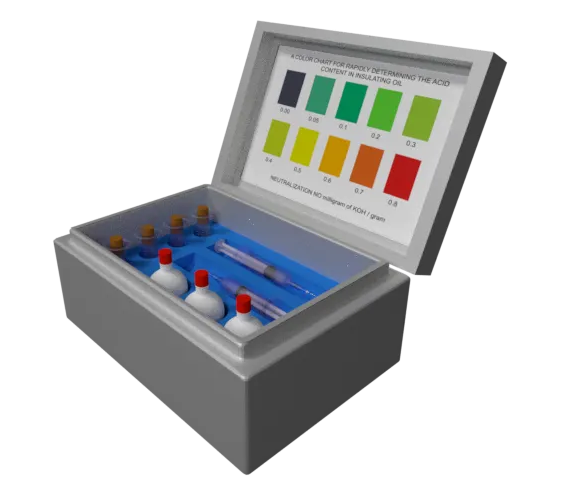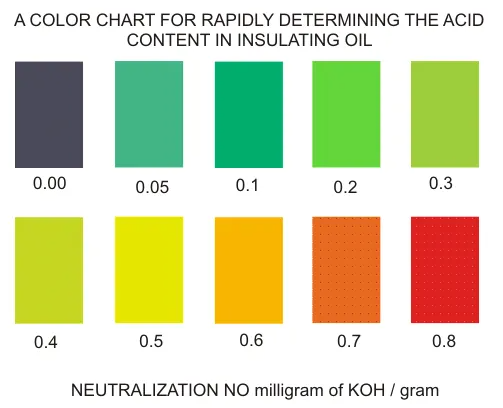Acidity Test of Transformer Oil
For the oil-immersed transformer, the transformer oil plays a vital role in insulating and cooling. Therefore, the Acidity Test of Transformer oil is a very essential test for analyzing the oxidation of transformer oil. The acidity test is taken to measure the acidity content in the transformer oil.
Table of content
Causes and Effects of Acidity in Insulating Oil
Measuring Acidity of Insulating Oil?
Principle of Acidity Test of Insulating Oil
The procedure of the Acidity Test for Insulating Oil
Causes and Effects of Acidity in Insulating Oil
The causes are due to oil leakage in the tanks or in associated pipelines. As a result, an oxidation reaction in the transformer oil takes place, further accelerated by the temperature and the presence of catalysts such as iron, copper, and metal compounds dissolved in the transformer oil.
With the Increased acidity of the oil, the resistivity of the oil gets decreased and the dissipation factor of the oil gets increased. Excessive oxidation accelerates the slug formation rates in the oil. It may also cause abnormal deterioration of paper used for insulation in the transformer windings.
Acidity Test Kit
An acidity test kit is used to determine the acidity of transformer insulating oil. It consists of one polythene bottle of sodium carbonate solution, one polythene bottle of rectified spirit (ethyl alcohol), and one bottle of universal indicator (liquid). Besides that, it also consists of volumetrically scaled syringes and clear and transparent test tubes.
Measuring Acidity of Insulating Oil
The acidity of insulating oil is usually measured as the quantity required in milligrams of KOH to completely neutralize the acidity of a specific quantity in grams of oil. The acidity of insulating oil is 0.3 mg KOH/g which means that 0.3 mg of KOH is needed to neutralize 1 gram of that insulating oil.
Principle of Acidity Test of Insulating Oil
With the neutral solution, the PH value is 7. With the acidic material, the PH value is less than 7 and, with the alkali material, the PH value is above 7.
The acidity of the normal oil is 0.3 mg KOH/gram. When alkali material is added to the transformer oil it may remain acidic if the alkali is added to neutralize the acidity effect of the transformer oil.
If the 0.3-gram alkali is added to the 1-gram transformer oil, The transformer oil may attain a neutral state of PH value 7.
If the alkali added to the transformer oil is more than 0.3 mg in 1 gram transformer oil, the PH value of oil is more than 7 and transformer oil becomes alkaline. The transformer oil has a PH value of below 7. It must have acidic properties. The acidic nature of the transformer oil can be visualized by observing the color of the strips when it is dipped in the transformer oil.
The procedure of the Acidity Test for Insulating Oil
- Firstly, take exactly 1 gram of insulating oil by providing a volumetric syringe. Actually, 1.1 milliliter oil is taken as 1 gram of oil.
- Before testing, the dissolved acid has to be extracted from the oil by adding exactly 1 ml of rectified spirit (ethyl alcohol) to the test sample. This is because the acid produced in the mineral oil is highly soluble in alcohol.
- After shaking the test sample well, 1 ml of sodium carbonate is added to the sample. Sodium carbonate is the most suitable alkali for that purpose because it does not change its characteristics much when it comes in contact with the atmosphere during use.
- At last, after re-shaking the sample mixture we have to add 5 drops of universal indicator in the sample.
Observation
The value of acidity of the oil sample in mg KOH / g is described by the color of the sample oil after mixing rectified spirit, sodium carbonate, and universal indicator as follows:


